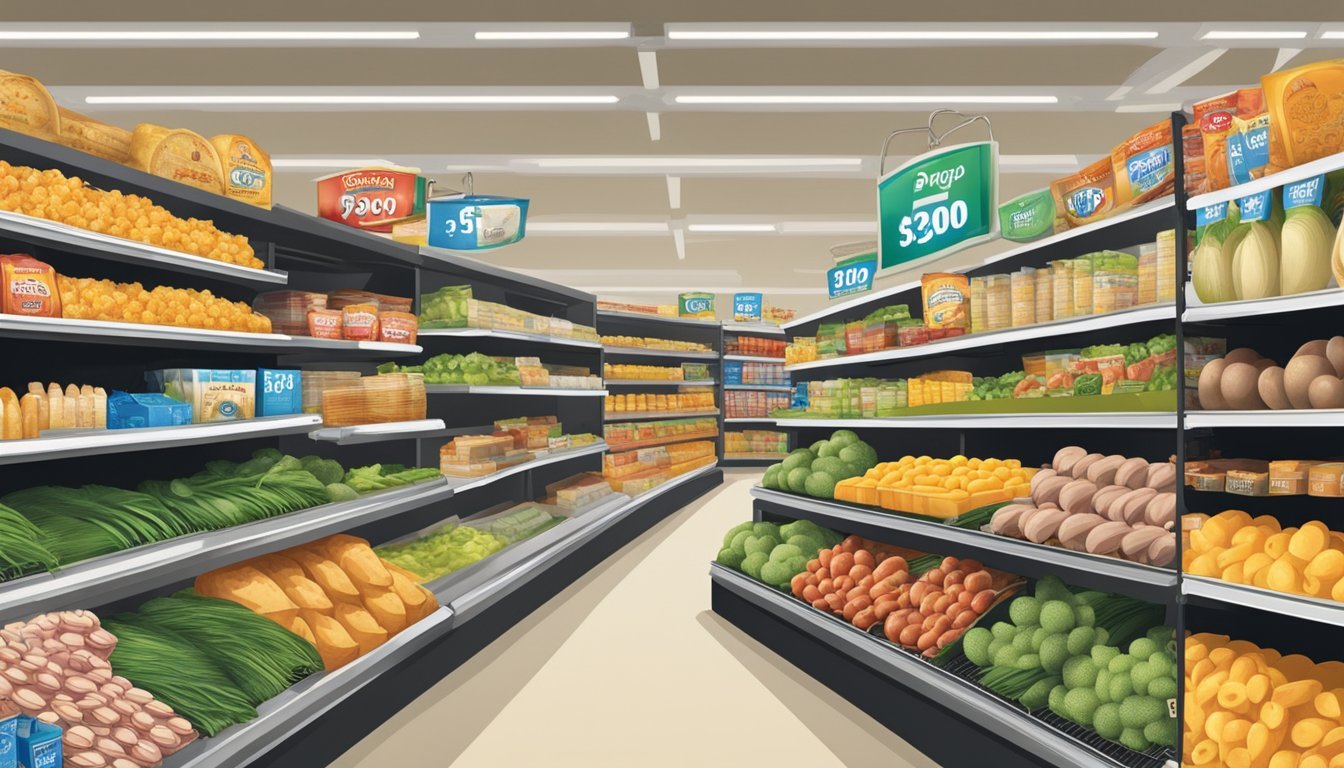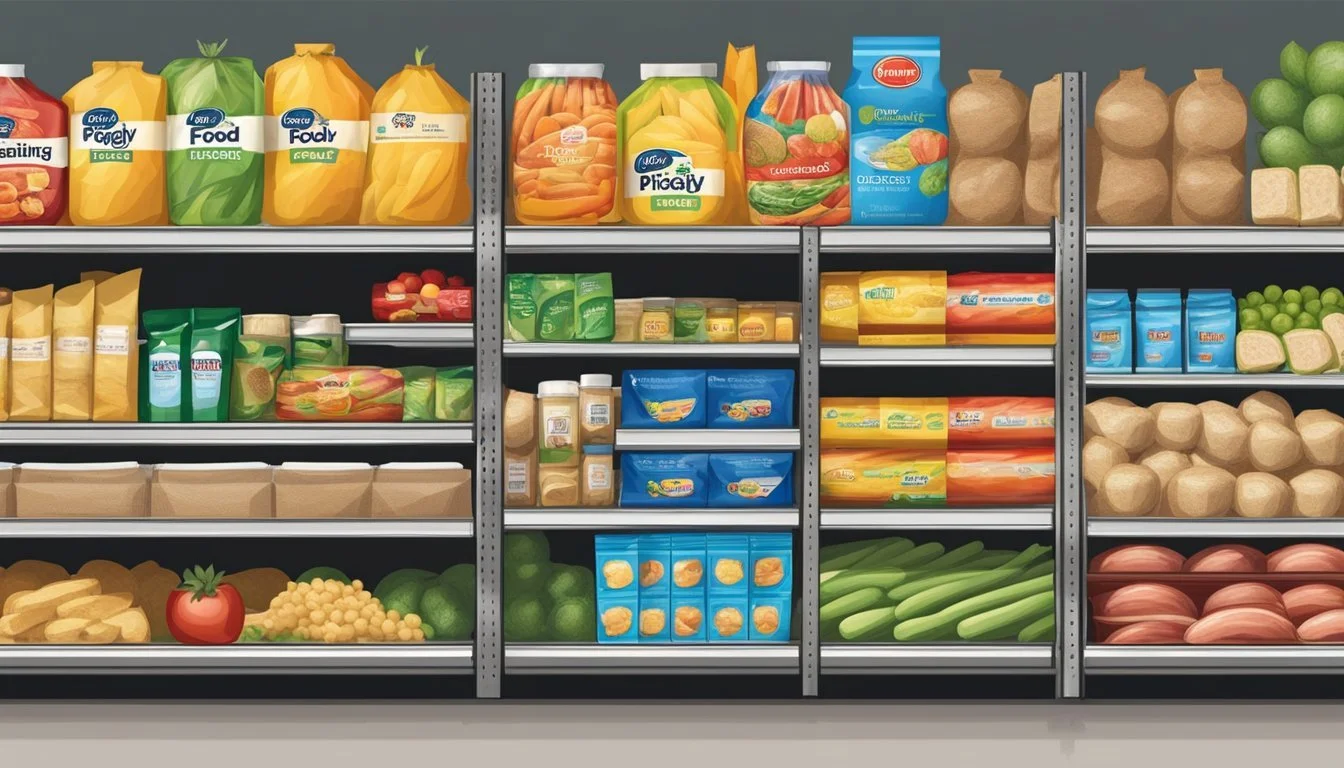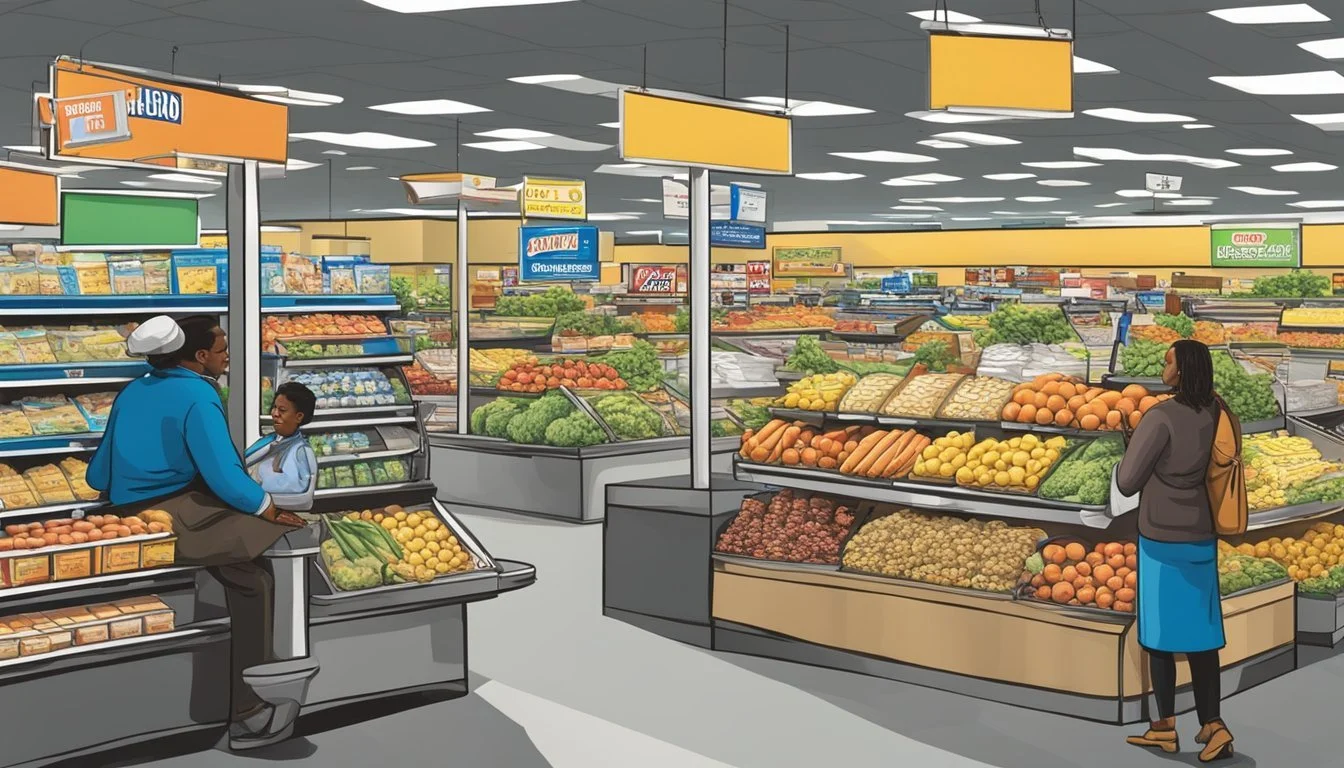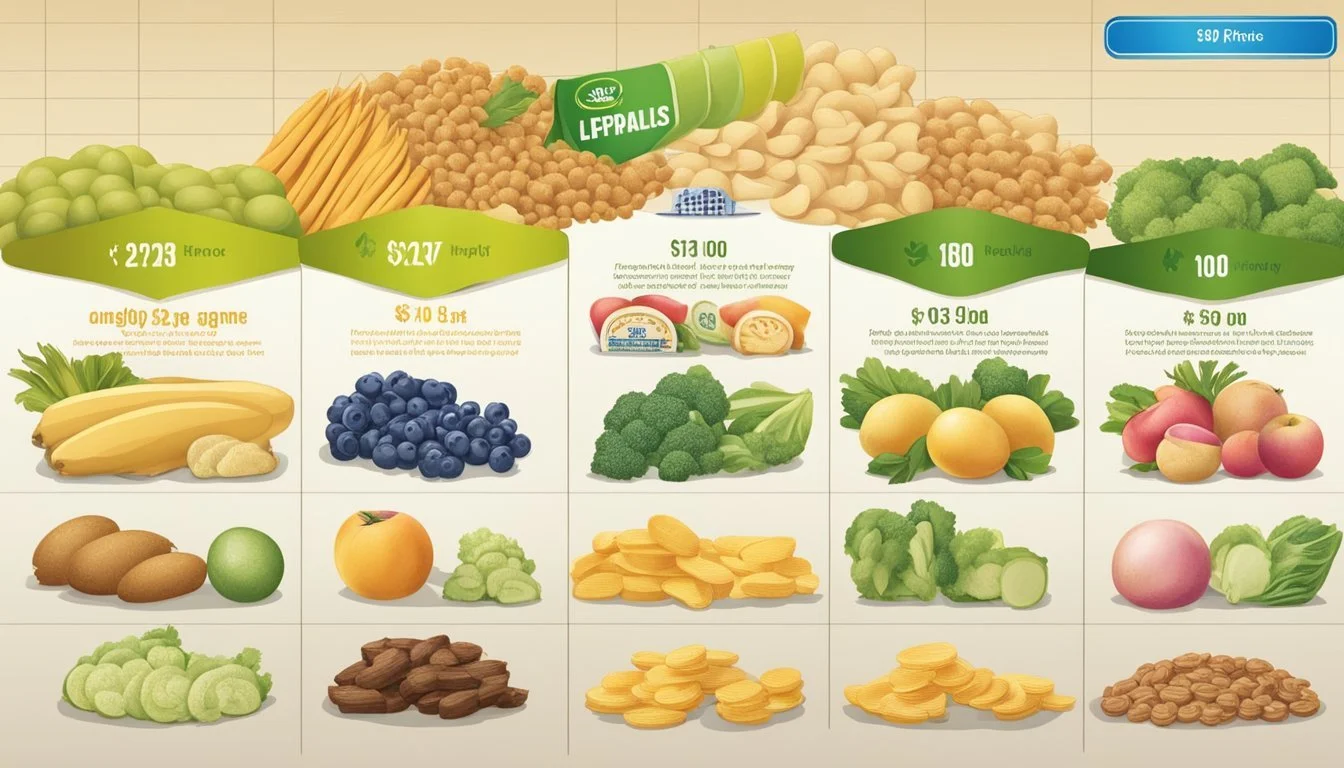Is Food Lion Cheaper Than Piggly Wiggly?
Comparing Grocery Store Prices
Part of Our Grocery Store Guide with Details on Food Lion Prices and Piggly Wiggly Prices
When comparing grocery store chains in the United States, a frequent question among consumers is whether Food Lion or Piggly Wiggly offers lower prices for their grocery items. Both chains have established themselves as important players in the American grocery market, with a presence that spans numerous states, especially in the South. To provide shoppers with valuable insights, a price comparison can offer a clearer picture of which store maintains a more budget-friendly pricing structure.
Data indicates that Food Lion may generally present more cost-effective options across various product categories when compared to Piggly Wiggly. Shoppers have been found to save approximately 17% at Food Lion on their overall grocery bills compared to Piggly Wiggly, suggesting a trend where Food Lion could be the go-to chain for customers looking to stretch their food budget. In the competitive grocery market, these findings could influence consumer decisions, particularly for those who prioritize affordable pricing without compromising on quality and variety.
The evaluation of these two grocery store chains takes into account the diversity of products offered and the everyday low pricing tactics that many stores apply. However, local market conditions and periodic sales can also affect pricing, so customers may experience variations in savings. Hence, engaging in regular price comparisons can guide consumers to make informed choices based on current pricing rather than historical differences alone.
Overview of Food Lion and Piggly Wiggly
Food Lion and Piggly Wiggly are two recognized grocery store chains that cater to customers predominantly in the Southern United States. Food Lion prides itself on providing a dependable and shopping experience with its widespread network. They are seen as a trustworthy supermarket, with a focus on value and regional preferences.
Piggly Wiggly, often considered a pioneering grocery store, delivers a unique shopping experience with its regional stores. It also thrives on the convenience and familiarity it offers to its customers, with a wide array of store brands and food products.
Each chain operates with a distinctive business model. Food Lion emphasizes quality and affordability, often competing closely on price with Piggly Wiggly, which emphasizes a down-home, community-based atmosphere.
Feature Food Lion Piggly Wiggly Store Count Extensive across the region 600+ locations in Southern US Brand Offering Focus on trustworthiness and value Strong emphasis on store brands Customer Focus Broad regional appeal Community-oriented positioning
Both grocery store brands focus on serving their customers with a range of products that align with regional tastes and budgetary considerations. Their store brands are touted to offer substantial savings without compromising on taste or quality. While each has its strengths, consumer preference often hinges on a combination of pricing strategy, location convenience, and shopping experience quality.
Comparative Analysis of Grocery Prices
When examining the grocery prices of Food Lion and Piggly Wiggly, customers often look for the store that allows them to save money while providing a vast selection and great deals. A price comparison reveals that Food Lion generally has lower prices than Piggly Wiggly. For instance, a shopper’s total at Food Lion amounted to $95.39, making it a more economical choice compared to Piggly Wiggly's $114.59 for similar items.
Price Breakdown
Food Lion: $95.39
Piggly Wiggly: $114.59
The difference in pricing strategies can translate to significant savings for the consumer. With a calculated saving of approximately 17%, Food Lion presents itself as a cost-effective option.
Potential Savings
Savings at Food Lion: ~17% compared to Piggly Wiggly
Despite these figures, it's worth noting that prices can fluctuate based on promotions, sales, and regional pricing policies. Consumers are encouraged to watch for local advertisements and in-store deals that might offer more significant savings on given days or specific products. Furthermore, loyalty programs and discount cards can further enhance savings potential at either store.
In identifying low-priced items, it is clear that Food Lion provides cost savings on a wide scale. However, individual experiences may vary, and consumers may find select products cheaper at Piggly Wiggly depending on the time and location. Shoppers are advised to consider their personal shopping list and prioritize stores that consistently offer more affordable prices across a range of products.
Product Category Price Breakdown
In comparing the prices at Food Lion and Piggly Wiggly, a detailed category-by-category analysis sheds light on which retailer offers the best deals across various grocery segments.
Produce Section
Food Lion consistently beats Piggly Wiggly on the price of fresh produce. Shoppers at Food Lion can often find bananas, lettuce, tomatoes, onions, potatoes, and carrots at lower prices compared to Piggly Wiggly, making it the more economical choice for fruits and vegetables.
Meat and Deli
When approaching the meat and deli sections, Piggly Wiggly's pricing on chicken breasts and ground beef tends to be competitive, but Food Lion frequently offers similar or lower prices in these departments. Deli meats also show comparable pricing but can vary depending on the brands and current promotions available at each store.
Dairy Aisle
In the dairy aisle, price differences are evident. Food Lion's prices for staples such as milk, butter, cheddar cheese, and sour cream are usually lower than those at Piggly Wiggly. This translates to visible savings over time, especially for households purchasing large quantities of dairy products.
Bakery and Dry Goods
The bakery and dry goods section showcase Food Lion as a leader in affordability, with lower prices on items like bread and shelf-stable items including brown sugar and sugar. This trend of competitive pricing makes Food Lion an appealing option for those looking to save on baked goods and pantry staples.
Frozen Foods
For frozen foods, both stores offer a variety of brands and prices. However, Food Lion tends to price its frozen goods, such as vegetables and prepared meals, in a more budget-friendly manner compared to Piggly Wiggly.
Canned and Packaged Goods
Lastly, in the realm of canned and packaged goods, Food Lion's prices on items like tuna, green beans, and ketchup often prove to be lower, aligning with the overall trend of Food Lion's pricing strategy that emphasizes affordability across the board.
Store Brand vs. Name Brand Comparison
When it comes to grocery shopping, consumers are often confronted with the decision between store brand and name brand products. The primary allure of store brands, also referred to as generics, is their cost-effectiveness. Typically, these items provide significant savings, which is a decisive factor for budget-conscious shoppers.
In terms of quality, some consumers may assume that name brands are superior. However, it should be noted that generic brands are required to meet the same safety and production standards as their name brand counterparts. The difference often lies in the marketing and packaging expenses that drive up the cost of name brand items, rather than in the actual quality of the product.
Brand Type Average Savings Perceived Quality Availability Store Brand up to 25% Comparable Supermarket own Name Brand - Established Widely available
Cheaper store brands can offer great deals without compromising on quality, with some customers finding certain store brand items to be just as, if not more, palatable than the name brands. While individual preferences might vary, the marked price difference is often enough to sway purchasing decisions towards store brands, especially as they constitute a large portion of grocery products sold.
Shoppers are encouraged to compare these options based on their particular needs and preferences, but it's clear that store brands offer a competitive alternative that's difficult to dismiss on the grounds of sheer economy.
Analysis of Location and Convenience
Food Lion and Piggly Wiggly are both prominent grocery stores particularly in the Southern United States. The number of store locations plays a pivotal role in assessing convenience for shoppers.
Food Lion boasts a large number of stores with over 1,000 locations predominantly in the Southeast and Mid-Atlantic regions. Given this extensive presence, many customers find a Food Lion store accessible within their local area, enhancing the overall convenience factor. The chain is a familiar presence known for providing a reliable shopping experience due to its widespread regional accessibility.
In contrast, Piggly Wiggly operates approximately 624 locations, which is a smaller footprint compared to Food Lion. Despite this, Piggly Wiggly still maintains a considerable regional presence, especially in Southern states. Customers may find their stores conveniently located in both urban and rural areas, which adds to the shopping experience by offering a variety of quality food products.
When considering the convenience provided by both grocery store chains, their locations are strategically placed to cater to their customer base. Customers generally perceive stores that are geographically accessible and have ample outlets within the region to offer a better shopping experience. In this regard, both Food Lion and Piggly Wiggly have established their stores to meet the needs of the regional customer base effectively.
The store locations, combined with the quality of products offered, directly influence a shopper's convenience and experience. Each chain has adjusted its store spread to ensure that their customers have access to their services with minimal travel hassles.
Deals and Sales Events
Both Food Lion and Piggly Wiggly offer a range of deals and sales events aimed at providing customers with opportunities to save on groceries. Food Lion frequently updates its Weekly Specials and Hot Sale items which customers can easily access through their weekly ads or online platforms. They often promote BOGO (buy one, get one) deals on select items, and customers can also benefit from using MVP cards for additional discounts on sale prices.
Piggly Wiggly tailors its sales events to the local market, offering Weekly Ad Specials with notable discounts across various categories. Shoppers are encouraged to check their local store's ads for current deals. They sometimes feature 'Pig Deals' which are exclusive sales for a limited time.
Food Lion's sales tend to be more consistent chain-wide, which can facilitate easier planning for budget-conscious shoppers. Piggly Wiggly's approach might provide greater variability regionally, with potential for surprise deals.
Both supermarkets accept manufacturer's coupons which can further reduce sale prices and lead to very cheap food purchasing options when combined with existing sales. However, unlike Food Lion, Piggly Wiggly does not boast a nationwide presence, which can impact the availability of certain deals.
Here's a simplified comparison of the types of deals shoppers might find:
Food Lion:
Weekly Specials
BOGO Offers
MVP Card Discounts
Piggly Wiggly:
Weekly Ad Specials
Regional 'Pig Deals'
Localized discounts
Shoppers are encouraged to sign up for newsletters or loyalty programs at both stores to stay informed about the latest sales events and to receive additional coupons that can be used for even greater savings.
Loyalty Programs and Savings Strategies
When seeking to save money on groceries, loyalty programs play a crucial role. Both Food Lion and Piggly Wiggly offer loyalty programs that provide shoppers with the opportunity to enjoy discounts and special offers.
Food Lion utilizes its MVP Savings Program, which has been recognized for its effectiveness in providing value to customers. Shoppers with the MVP card have access to discounted pricing on a wide array of products. Additionally, they can benefit from personalized coupons, which further support budgeting efforts, particularly for a family of 4 or other sizable household units.
Comparison of Loyalty Benefits:
Feature Food Lion MVP Program Piggly Wiggly Loyalty Program Special Discounts ✅ ✅ Personalized Coupons ✅ (Information Not Provided) Rewards Points (Information Not Provided) (Information Not Provided) Member-Only Offers ✅ ✅
While Piggly Wiggly also provides customers with savings through its loyalty program, detailed information on its specific benefits is less readily available.
Customers who strategically use these programs can integrate the savings with other methods such as meal planning and shopping with a list to reduce impulse purchases. These strategies allow shoppers to maximize their budget and often result in significant long-term savings.
Implementing coupons from these loyalty programs into one's shopping routine can enable more strategic purchases. By focusing on buying items that are on sale and stocking up on non-perishable or freezable items, families can save considerably over time.
By aligning their shopping habits with the loyalty programs' schedules and offers, customers can transform their budgeting and shopping experiences for the better.
Consumer Ratings and Reviews
When considering the consumer ratings and reviews of Food Lion and Piggly Wiggly, they both exhibit strengths and weaknesses as reflected by their customers' experiences.
Food Lion
Customers often cite Food Lion's pricing as a positive feature, noting that the store generally offers competitive prices on a variety of items. Reviews suggest that Food Lion's lower prices do not sacrifice quality, especially for store-brand items. However, there are instances where Food Lion receives low marks for customer service in some locations, impacting its overall ratings.
Aspect Rating Pricing Favorable Quality Satisfactory Customer Service Varies
Piggly Wiggly
Piggly Wiggly's reviews are mixed, with some customers appreciating the store's local charm and customer service. Others feel that the prices can be higher compared to larger chains. It's also noted in some market surveys and consumer feedback that Piggly Wiggly has higher overall costs for groceries. Customer service experiences tend to be positive, but this can differ from store to store.
Ratings: Varies significantly by location, often dependent on the local management and competitive pricing in the area.
Reviews: Generally centered around the cost of goods, with customer service also a noted factor.
In terms of customer satisfaction, both Food Lion and Piggly Wiggly have their proponents and detractors. As with most retail experiences, much depends on the individual stores and the management teams in place. What remains consistent in reviews is the emphasis on the balance between price and service quality.
Alternatives to Food Lion and Piggly Wiggly
Consumers have a variety of options when choosing where to shop for groceries. This section explores how national chains and regional stores compare to Food Lion and Piggly Wiggly in terms of pricing, selection, and availability.
National Chains Comparison
Walmart and Target are recognized for their expansive reach and competitive prices. Walmart often leads in cost-effectiveness, while Target is noted for a balanced mix of affordability and a pleasant shopping environment.
Aldi prioritizes affordability with its house brands.
Kroger, a large grocery chain, maintains competitive pricing and a wide assortment.
Costco and Sam's Club offer bulk purchasing options, typically resulting in savings for the consumer.
Trader Joe's cultivates a niche market with unique and specialty items. Whole Foods Market, known for its organic and high-quality selections, might not compete on price but offers premium choices.
Regional Stores Analysis
Regional stores provide tailored offerings and sometimes better deals due to their focus on local preferences.
Southeast: Publix is commended for customer service and store-brand quality.
Midwest: Chains like Meijer and Hy-Vee offer competitive pricing and locally sourced products. Fresh Market provides gourmet options for the discerning shopper.
Northeast: Wegmans stands out for its wide variety, in-store experience, and ready-to-eat options.
West Coast: Safeway and Albertsons maintain a strong presence with regular deals and a comprehensive range.
Texas and Southern US: H-E-B is favored for its quality and competitive prices.
Smaller chains like Harris Teeter and Weis maintain a loyal customer base by emphasizing quality and customer service. Lidl is a growing presence with its deep discounts and efficiently designed stores. Sprouts Farmers Market caters to the health-conscious shopper, specializing in fresh produce and organic foods.
In addition, Amazon has become a go-to for convenient online grocery shopping, with options like Amazon Fresh and the acquisition of Whole Foods Market expanding its physical and virtual grocery footprint.
Healthy and Cost-Effective Shopping Tips
When aiming to save money while shopping for groceries, the goal is to maintain a healthy diet without compromising on quality. Shoppers can utilize strategic planning to ensure they are selecting healthy and inexpensive items.
Planning Ahead: Creating a meal plan before visiting the store can help in avoiding impulsive buys and ensures a variety of nutrients are included in the weekly diet.
Make a List: Based on the meal plan, compile a grocery list, prioritizing fresh produce, high-fiber carbs, and lean proteins.
Weekly Mailers: Use store flyers to find the best deals, and adjust your meal plan to incorporate these sale items.
Fruits and Vegetables: Purchasing fruits and vegetables, whether fresh, frozen, canned, or dried, can be a cost-saving strategy. Prices can vary, and often, frozen and canned goods provide the same nutritional value as fresh produce.
Seasonal Buys: Opt for seasonal produce as they tend to be more affordable and at their peak quality.
Canned/Frozen Produce: Compare prices with fresh counterparts. They usually have a long shelf-life, reducing waste and cost.
Proteins and Carbohydrates:
Whole Grains: Choose whole grains, such as brown rice or whole wheat bread, for better nutritional value and long-lasting satiety.
Lean Meats: Buying in bulk and choosing less expensive cuts of meat can result in savings. Plant-based proteins often offer a cost-effective alternative.
Key to maintaining budget and health:
Quality Over Quantity: Invest in better quality, nutrient-dense foods that will provide more health benefits and keep you full longer.
Homemade Options: Prepare foods like bread at home to save money while controlling ingredients for a healthier product.
This approach not only allows for savings but also encourages a balanced and nutritious diet. Shoppers who buy thoughtfully can enjoy the benefits of both healthy eating and a controlled budget.






